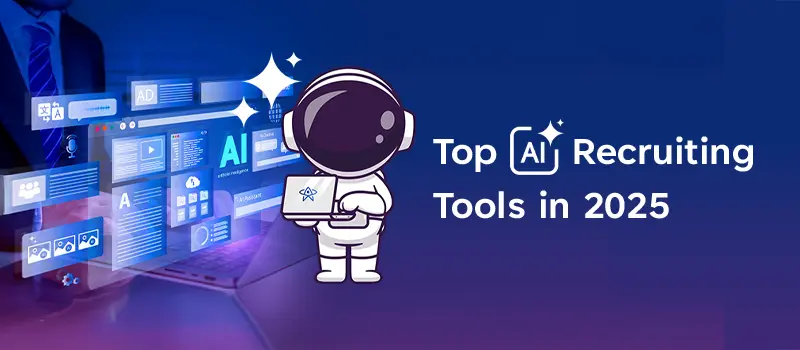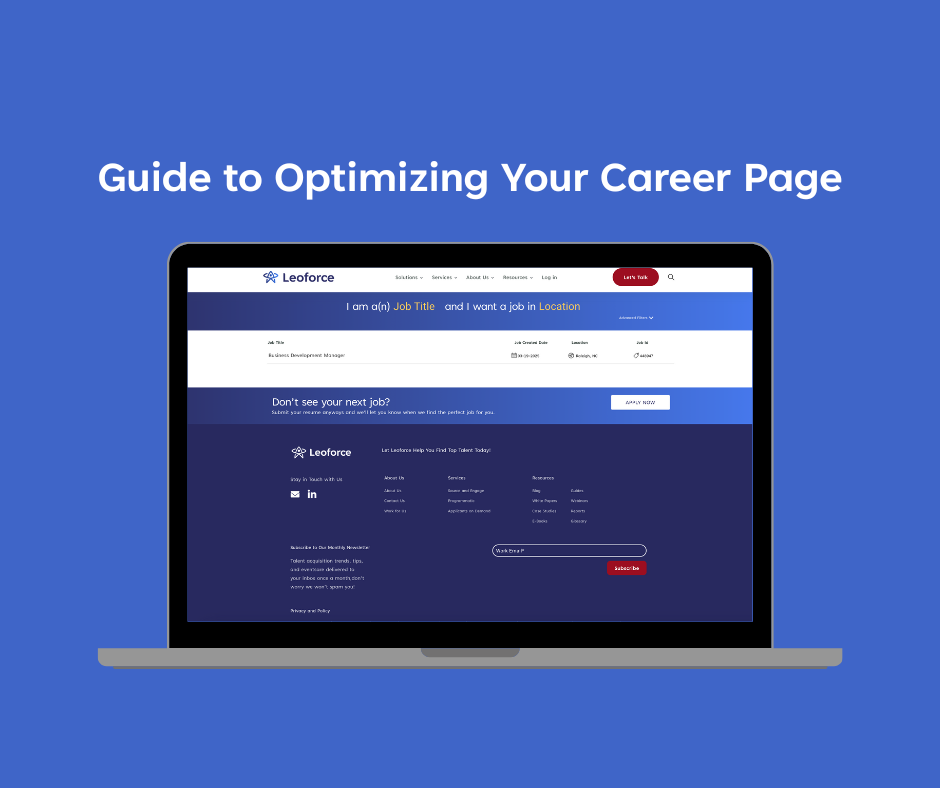What HR can learn from Apple’s talent management to avoid layoffs?

The workforce is the biggest asset for any company. And retaining that workforce is critical to maintaining high levels of productivity and preventing knowledge drain. Moreover, replacing an employee may cost up to 213% of the employee’s salary, especially at higher levels[1]. Yet, sometimes letting them go becomes inevitable.
This is evident from the massive tech layoffs in 2022 and 2023. Interestingly, while tech majors like Google (Alphabet), Microsoft, Amazon, IBM, and Meta Platforms (Facebook) downsized their teams across the globe in a bid to curtail costs, Apple’s layoffs announcement is still to come around.
So, how has Apple managed to avoid layoffs? The iPhone maker has a robust talent management and hiring strategy. In the first few months of 2023, the world’s largest tech brand took several initiatives to shield itself from adding to the tech layoff tally. In this blog, we’ll examine how Apple has remained free of layoffs and what HR teams worldwide can learn from it.
Layoffs initiated by tech giants
Instability in the global economy, lower consumption rates, and rising costs forced tech companies to lay off more than 150,000 employees in 2022[2]. Despite fading recessionary fears, companies continued to trim costs into the new year. In the first four months of May 2023, the total tech layoffs reached 168,243[3].
Per multiple sources, here’s a look at the layoffs announced by tech behemoths:
- Amazon cut 8% of its workforce, laying off 27,000 employees.
- Google-parent Alphabet reduced 6% of its global employee base, firing 12,000 employees in January
- Meta Platforms, which laid off 11,000 employees in November 2022, is planning to shed 10,000 more by the end of 2023.
- Microsoft also plans to lay off 10,000 people in 2023 and has begun by firing around 500 of them in the first quarter.
- Twitter and Greenlab reduced their workforce by 70% and 50%, respectively, through 2022 and the first quarter of 2023.
Where does Apple stand?
Apple is working diligently on cutting costs. The company has deepened employee working hour vigilance, reduced non-necessary travel and transfers, and, most importantly, delayed bonuses. Further, 32% of employees claim to have taken pay cuts to keep their jobs, while 31% are still concerned that Apple layoffs might be closing in[4].
When asked if an Apple layoff can be expected in 2023, CEO Tim Cook stated[5], “I view that as a last resort and, so, mass layoffs are not something that we’re talking about at this moment.” Notably, he refrained from saying that Apple would never consider a layoff amid declining revenues.
Apple layoff history
Apple has a relatively short history of layoffs, with the most recent major round occurring in 1997. At the time, the company was struggling financially, and Steve Jobs had just returned to take over as CEO. Jobs made a number of changes in an effort to turn the company around, including laying off 4,100 employees[6].
Since then, Apple has had a few smaller rounds of layoffs, but nothing on the scale of 1997. In 2008, the company laid off 3,500 employees during the global financial crisis. And in 2015, it laid off 200 employees from its retail division.
How Apple hires and manages talent differently?
Apple focuses on the quality of talent when hiring, which is probably among the reasons the company works so hard to hold on to its employees. Here are the top three gems from Apple’s talent management and hiring strategy:
Hires in a steady manner
During the pandemic, when Meta Platforms expanded its team by 94%, Google by 57%, and Microsoft by 53%, Apple’s team grew by merely 20%[7]. Further, it scaled down contractual engagements to prevent layoffs of full-time employees. Methodical hiring helps the company focus on generating more revenue per hire rather than hiring a large number of people.
Freezes with caution
During challenging periods, the company cuts back hiring and abstains from replacing employees who leave. They also ensure there are enough present and future requirements of employees and skills in every business area before hiring. Further, a freeze on talent acquisition helps maintain stability in team dynamics.
Shuffles talent
In February 2023, the company hired its first-ever Chief People Officer, who immediately reshuffled talent. This was an endeavor to enhance the experience of every team member. Rotational job opportunities help in the continued learning and growth of employees, who can then effectively switch between roles in case of attrition.
In addition to all this, when push comes to shove, Apple leadership has shown to take the hit as a commitment to their long-term talent management strategy. In the recent storm of tech layoffs, in parts, the Apple layoff could be avoided because the CEO, Tim Cook, took a 40% pay cut[8]!
However, many speculate that this could be the company conveying the message of declining revenues, where Cook advocates for ownership by leading by example.
Lessons in talent management from Apple avoiding layoffs
Apple’s talent management has been exemplary. Here are key points that HR teams can imbibe to improve their talent acquisition and retention practices:
Prioritize hire quality over quantity
The quality of an employee determines the return on investment of the hiring process, which consumes both time and money. A few factors to ensure a quality hire include:
- Evaluating the time needed to settle into their new roles
- Their longevity in any role
- The value they add to the company and the role
- How long it takes for them to start delivering or being productive
- How well they can learn and expand their skill when the job requires
Allocate the hiring budget by factoring in company financials
The hiring budget should reflect the company’s skill requirements and compensation budget. Additionally, considering the future of the role for which hiring is being done is essential. These may include:
- Future projects or prospects
- Cost of training
- Turnover rate
- Possibility of job rotation
Build a strong internal talent pipeline
Talent acquisition requires time and is riskier. Building an internal talent pipeline can reduce hiring costs while ensuring the candidate is familiar with the company culture. This requires HR to maintain an easy-to-filter database of the company’s talent pool and organize training programs for upskilling and creating opportunities for employees to diversify their experience.
Invest in employer branding
Talented individuals are quickly absorbed by companies, most of which may be your competitors. Such candidates are sourced and not hired. This makes employer branding essential by promoting the company culture and ensuring high employee satisfaction rates. When employees become brand ambassadors, they facilitate talent sourcing.
Conclusion
Whether big or small, every enterprise talks about being people-centric, but not all can walk the talk. Apple is plausibly the only tech giant that takes its talks seriously. And the way they approach hiring (and firing), it isn’t far-fetched to believe the rumor that Apple has a secret hiring tool!
In any case, it’s critical to focus on quality hiring that is aligned with business requirements and budget. Start building a stronger employee acquisition and talent management strategy by leveraging AI-driven hiring solutions like Leoforce Quantum. It is equipped to source talent from 50+ channels, including social media, and helps build consolidated internal and external talent pipelines. To see how, Request a Demo today.
FAQs
Which tech companies are laying off?
The tech companies lay off in a hoard include Google, Amazon, Meta, and Microsoft.
Is Apple laying off employees in 2023?
Yes, as of early May 2023, Apple has reportedly started a small number of layoffs in the division that handles building and upkeep for Apple’s retail stores. However, so far, they have been able to avoid mass layoffs.
How to manage talent during layoffs?
During layoffs, communicate transparently, provide support, offer career counseling, and reassign employees when possible to retain valuable talent.
Resources
[1] https://www.workhuman.com/blog/the-ridiculously-high-cost-of-employee-turnover/
[2] https://365datascience.com/trending/who-was-affected-by-the-2022-2023-tech-layoffs/
[3] https://www.peoplematters.in/news/employee-relations/tech-layoffs-2023-companies-that-have-made-cuts-36867
[4] https://www.comparably.com/companies/apple/layoffs
[5] https://www.cnbc.com/2023/05/04/apple-layoffs-are-a-last-resort-tim-cook-says.html
[6] https://money.cnn.com/1997/03/14/technology/apple/
[7] https://recruitingdaily.com/can-apple-continue-to-dodge-mass-layoffs/
[8] https://www.cnbc.com/2023/01/12/apple-ceo-tim-cook-receives-a-40percent-pay-cut-after-shareholder-vote.html





